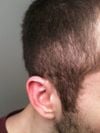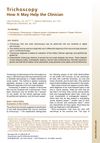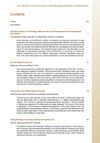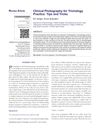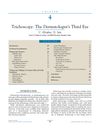Trichoscopy
October 2015
in “
CRC Press eBooks
”
TLDR Trichoscopy is a useful tool for examining and monitoring hair and scalp conditions.
Trichoscopy, performed with a handheld dermoscope or digital videodermoscopy system, was a valuable tool for noninvasive evaluation and monitoring of hair and scalp conditions. It allowed visualization of abnormalities in scalp skin color, structure, and hair follicle openings, known as "dots." In androgenetic alopecia, both males and females exhibited similar trichoscopy features. Alopecia areata was characterized by yellow dots, exclamation mark hairs, tapered hairs, and black dots, while trichotillomania showed hairs broken at different lengths. Discoid lupus erythematosus on the scalp presented with thick arborizing vessels and large yellow dots. Trichoscopy was effective in assessing genetic hair shaft abnormalities and monitoring treatment efficacy in clinical settings and trials.
